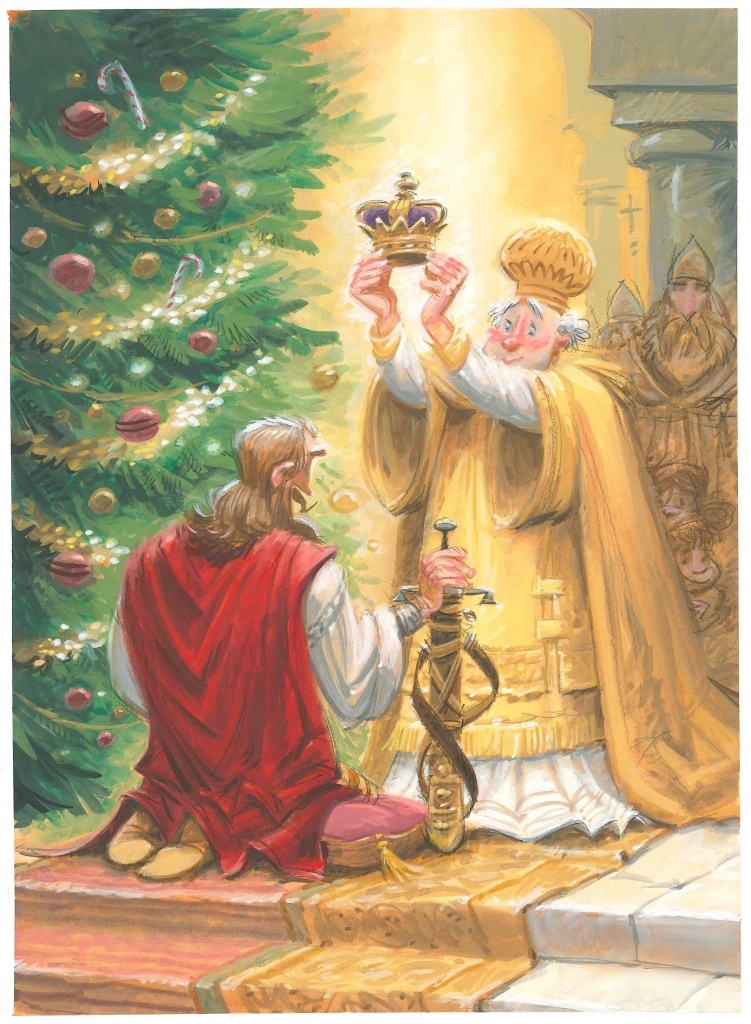Here’s the painting of Charlemagne. You can watch me paint it in the previous post. Also, if you’d like to receive this Christmas card—let’s face it, I’m listening to Christmas music over here and the decorations are still up—just private-message me your postal address.
































